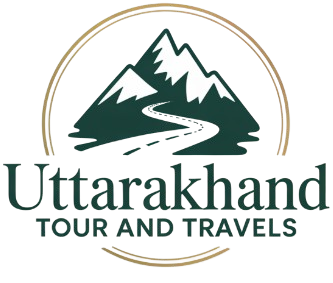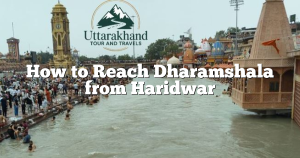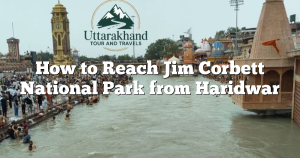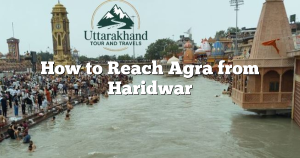Are you planning a journey from the bustling capital city of Delhi to the sacred banks of the Ganges in Haridwar? Traveling by road is a very popular and convenient choice, offering a direct and often scenic route. This guide will provide you with all the essential information to plan your road trip, making it smooth and enjoyable.
Delhi to Haridwar by Road Distance & Travel Time
The road distance between Delhi and Haridwar is approximately 200 to 225 kilometers. The journey typically takes about 4 to 6 hours, though this can vary depending on the specific route you choose, traffic conditions, and the number of stops you make. During peak hours or festive seasons, travel time might extend.
How to Travel from Delhi to Haridwar by Road
Traveling by road offers flexibility and the chance to enjoy the changing landscapes as you leave the city behind and approach the foothills of the Himalayas. You have a couple of main options for road travel: driving yourself or hiring a taxi.
1. Main Road Routes to Haridwar
There are a few well-used routes connecting Delhi to Haridwar:
- Via NH334 (Most Popular and Recommended):
- Distance: Approximately 236-247 km.
- Travel Time: Usually around 4.5 to 6 hours.
- Path: This route takes you through Ghaziabad, Modinagar, Meerut, Muzaffarnagar, and Roorkee.
- Highlights: This is generally a well-maintained National Highway. You’ll find many roadside eateries and rest stops, including popular ones like Cheetal Grand in Khatauli, which is a favorite stop for travelers for meals and refreshments.
- Considerations: While usually smooth, traffic can be heavy around urban areas like Ghaziabad and Meerut, especially during rush hours.
- Via NH709AD & NH334:
- Distance: Around 246 km.
- Travel Time: Can sometimes be quicker, around 4 hours 18 minutes, if traffic permits.
- Path: This route goes through Sonipat, Shamli, and Muzaffarnagar, eventually joining NH334.
- Highlights: This path often offers a more rural and less crowded experience, which can be quite pleasant and scenic.
- Considerations: Road conditions might vary slightly compared to the main NH334, but it can be a good alternative if you want to avoid some of the heavier traffic spots.
- Via Upper Ganga Canal Road & NH334 (More Scenic, Potentially Slower):
- Distance: Slightly shorter at about 221-223 km.
- Travel Time: Can take a bit longer, around 6-7 hours, depending on the condition of the canal road and local traffic.
- Highlights: This route runs alongside the picturesque Upper Ganga Canal for a significant stretch, offering unique views of waterways and rural life.
- Considerations: This road can be narrower in parts and may not be as fast-moving as the main highway. It’s best for those who prioritize scenery over speed.
2. Choosing Your Travel Method: Self-Drive vs. Taxi
- Self-Drive:
- Pros: Offers maximum flexibility. You can stop whenever and wherever you like, control your pace, and choose your preferred route. Ideal for families or groups.
- Cons: Requires careful driving, especially through bustling towns and on potentially busy highways. You’re responsible for fuel costs, tolls, and parking.
- Tips: Ensure your vehicle is in good condition for a road trip. Carry all necessary vehicle documents. Use a GPS navigation app for real-time traffic updates.
- Hiring a Taxi/Cab:
- Pros: You can relax and enjoy the journey while a professional driver handles the driving. It’s convenient, especially if you have luggage or are traveling with elderly people or children. Door-to-door service is available.
- Cons: Generally more expensive than self-driving or taking a bus, especially for solo travelers.
- Booking: Taxis are readily available in Delhi through local taxi services, hotel travel desks, or online cab platforms like Ola Outstation, Uber Intercity, Savaari, etc. You can find options ranging from budget sedans to comfortable SUVs and larger tempo travellers. Fares typically range from ₹2,500 to ₹4,500 for a one-way trip, depending on the vehicle type and service provider.
- Tips: Confirm all charges, including tolls, driver allowance, and any extra kilometer charges, before starting your journey.
Road Conditions and Tolls
- Road Conditions: Generally, the major highways (like NH334) connecting Delhi to Haridwar are in good condition, offering a smooth ride. However, local roads or diversions might have varying quality.
- Tolls: Be prepared for several toll plazas along the route. It’s advisable to have FASTag enabled on your vehicle for a seamless passage through tolls. If you’re hiring a taxi, confirm if tolls are included in the fare.
Best Time to Visit Haridwar by Road
The period from October to February is generally considered the best time to visit Haridwar by road. During these months, the weather is pleasant and cool, making the journey comfortable. Summers (March to June) can be hot, and the monsoon season (July to September) can bring heavy rains, which might affect road conditions and visibility.
Traveling from Delhi to Haridwar by road is a straightforward and enjoyable experience, allowing you to embark on a spiritual journey or simply enjoy a refreshing getaway. Plan your trip with these details in mind for a memorable experience.









